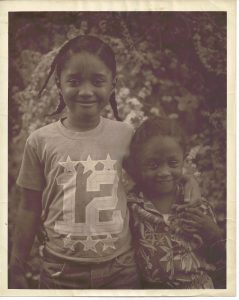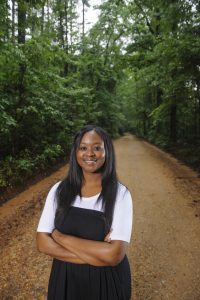
Dr. Robin Boylorn’s research unearths stories that have been buried for generations.
Boylorn is an autoethnographer, a researcher of herself, her own culture and her own identity — a black woman, raised in the South.
Her research carried her from the life of a big-city, independent, college-educated woman back to her roots in small-town North Carolina.
“I wanted to find out about black women’s lives, the stories that we tell, the stories that we don’t tell and why,” Boylorn says. “As an insider and outsider in the community, I had the benefit of knowing some cultural and family stories before ever interviewing anyone. I had an opportunity to pay attention to things people didn’t talk about.
“Intentionally or not, they chose to not share part of their story. These things were interesting to look at whenever I was trying to figure out how we see ourselves and how other people see us and to put the stories out there in the world.”
The University of Alabama faculty member’s interest in researching the lives of black women sprung from a realization when she entered college that black women, particularly those in the rural South, were underrepresented in the body of research she was using in her class projects.
“It was almost like I didn’t exist, that people like me didn’t exist,” Boylorn says. “If and when we did, it was in a time period of slavery, or it was in some kind of quantitative form, statistics about or around black women. I found myself in the fiction writing of black women writers, but I didn’t find myself in the scholarship I was expected to do in the classroom. That’s a problem.”

The research that started in college has spanned into her professional career, leading to publication of Boylorn’s first book, “Sweetwater: Black Women and Narratives of Resilience,” in 2012.
The book is a history of the town where she grew up, including historical facts, interactive interviews, ethnographic field research, participant observations and Boylorn’s own observations and experiences. She investigated the ways race and racism, sex and sexism and class and classism have changed, or not, over several generations.
Boylorn’s mother, Bettina Boylorn, was one of the women interviewed for the book.
“There will now be written documentation so the current and future generations can search and find out information about the city, when it was established, its roots, the people that lived there and the contributions they have made,” Bettina Boylorn says. “They will be able to have names, faces, stories and history that they can relate to. Most of all they will know that we are a part of history even in a small town.
“Our voices and our lives are important, too, and we are no different from anyone else.”
Robin Boylorn’s ultimate goal in her research was to give voice to black women.

“I feel like the biggest contribution my research makes is that it humanizes black women, that it sees them beyond stereotypes,” Boylorn says. “I don’t speak for all black women, but I attempt to give them a platform to speak their own words. It was important to me to preserve the words, the language and the specificity of what they said about their own lives.”
The result of Boylorn’s research is a mix of narrative and history, and she says her hope is to make it accessible to anyone through the tool of fictional place-setting, providing a backdrop for the stories she uncovered in interviews with black women. But her research is not just for black women.
“Even though I write about rural black girls, my intention is that it resonates with many people from the rural South,” Boylorn says. “I actually taught “Sweetwater” last semester, but some of the feedback that I got from my white students, mostly female students, was how resonant the “Sweetwater” story was with them even though they’re not black.
“It’s not just about black womanhood or race, it’s about sex, and it’s about class, so even though I don’t write specifically about the white experience in the rural South, I do write about it because I’m writing about the rural South.
“As excited as I am when black girls say they see themselves in my work, I leap for joy when a white girl says, ‘I see myself.’ It speaks to the connections, how we are so much more the same than we are different.”
